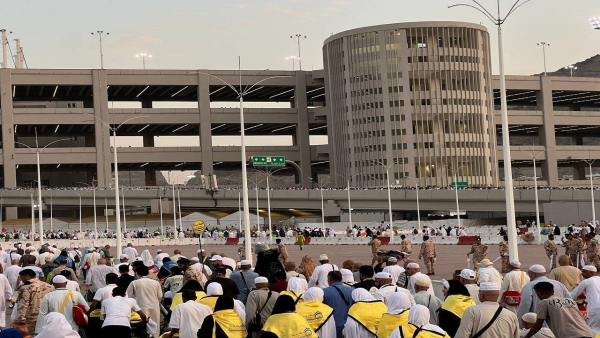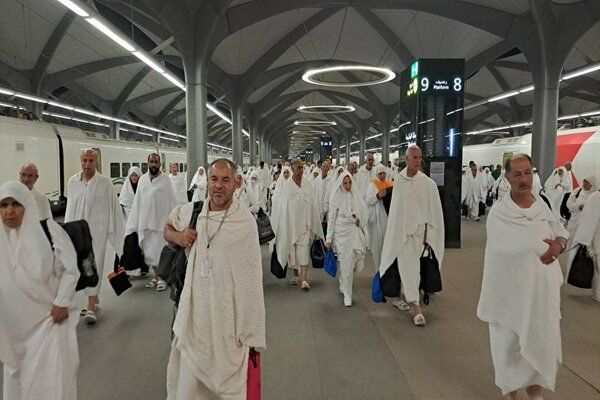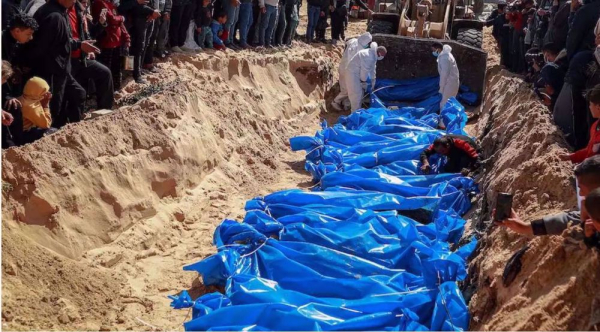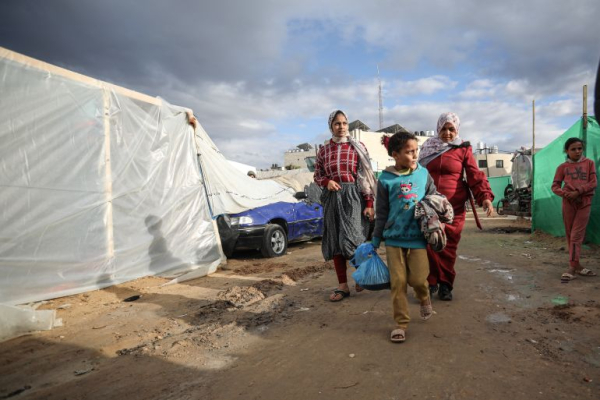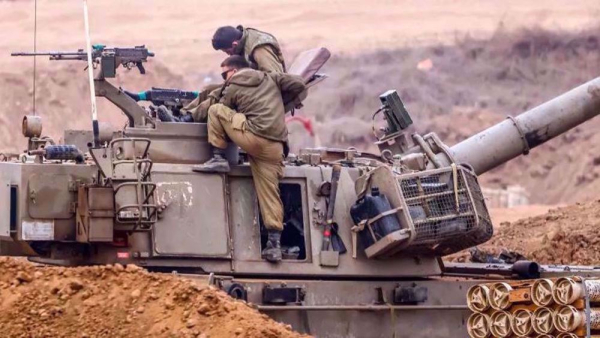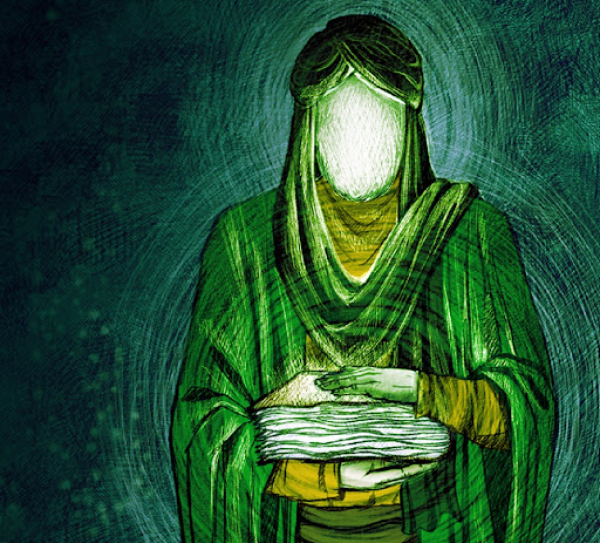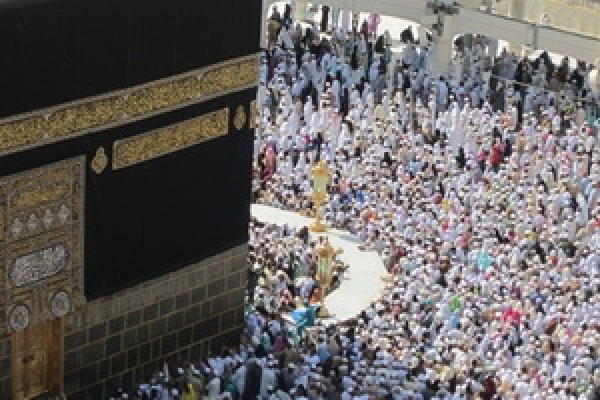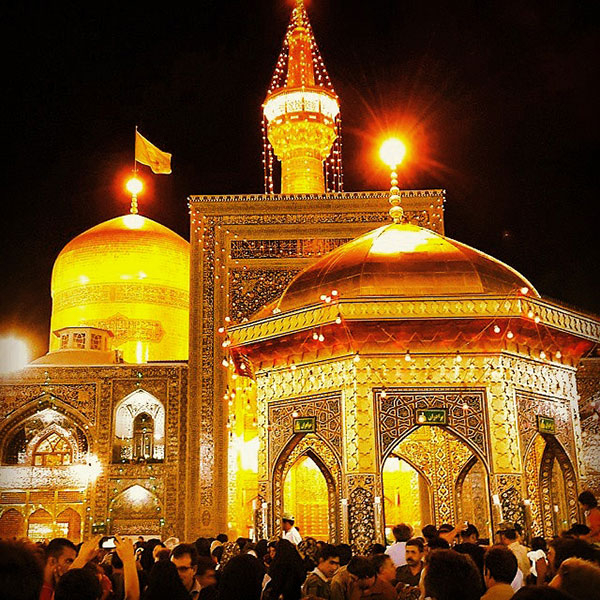zarezadeh
Questions related to throwing stones at Jamarat
Question: Is throwing stones at Jamarat permissible on high floors or not?
Answer: As a precaution, it is not permissible.
Question: What is the ruling on throwing stones at night?
Answer: It is not permissible.
Question: Should throwing stones at Jamarat be done only by hand, or is throwing stones with special tools that can be controlled by hand, such as a stone hook, etc., permissible?
Answer: Throwing stones with such tools is not permissible.
Representation of Hajj for physically disabled people who are financially able.
Is it necessary for someone who is financially able but is sick and cannot go to Hajj himself to appoint a representative?
Answer:
If he is financially able while healthy and has not gone to Hajj, it is necessary for him to appoint a representative on his behalf. However, if he is financially able while in a state of illness that has made him unable to go to Hajj and continues to this day, it is a matter of precaution, and indeed, it is more obvious, for him to appoint a representative to perform Hajj on his behalf.
Over 700 bodies recovered in Gaza, most remain unidentified
The Gaza Civil Defence has announced that more than 700 bodies have been recovered from multiple sites across the Gaza Strip, most of which remain unidentified due to the severe nature of their injuries.
Mahmoud Basal, a spokesperson for the Civil Defence, in a press statement, highlighted the severe challenges faced by recovery teams, including a lack of available laboratories and essential equipment necessary for the recovery and identification of the deceased.
Basal highlighted the dire situation on the ground, noting that more than 10,000 bodies remain trapped beneath rubble, with recovery efforts stalled until the necessary equipment is provided.
“This issue will remain unresolved until we have access to the required resources,” he said, stressing the urgent need for an international resolution to alleviate the suffering of the Palestinian people.
The Civil Defence has resorted to burying unidentified bodies in designated cemeteries, classified as “unknown.”
Basal lamented that “most of these remains consist of dismembered body parts or mere bones,” highlighting the heartbreaking reality faced by families searching for their loved ones.
14,000 unaccounted for in Gaza'
Meanwhile, the Centre for Political and Development Studies revealed on Tuesday that over 14,000 individuals are currently unaccounted for in Gaza, with estimates suggesting that 2,000 to 3,000 of them have been detained by Israeli forces, according to the Palestinian Information Centre.
The whereabouts of these detainees within the Israeli prison system remain largely unknown, adding to the anguish of their families.
The Centre indicated that many of the missing are believed to be trapped under rubble or in areas that are inaccessible due to military restrictions imposed by Israeli forces. These restrictions hinder accurate documentation of the missing and impede rescue teams from reaching victims, further exacerbating the ongoing humanitarian crisis.
In response to the escalating situation, the Centre has called for international pressure on Israel to allow humanitarian teams access to affected areas. They have also urged for the provision of forensic and DNA testing equipment to aid in the identification of victims.
The Centre stressed the need for an international coordination mechanism among human rights organizations to document violations and hold accountable those responsible.
Furthermore, they urged the need to provide psychological and social support to families of the missing, as many continue to grapple with the uncertainty surrounding their loved ones' fates.
According to UN satellite data (UNOSAT), two-thirds of Gaza's pre-war structures – over 170,000 buildings – have been damaged or flattened by Israeli military forces during the regime's 15-month-long genocidal war on the besieged territory, which killed more than 48,000 Palestinians, mostly women and children.
Press TV’s website
Israel showing ‘unprecedented disregard’ for human rights in Gaza: UN
The UN Human Rights chief says the Israeli regime has been demonstrating an “unprecedented disregard for human rights” in the Gaza Strip, calling the humanitarian situation there a "catastrophe."
UN High Commissioner for Human Rights Volker Turk presented a comprehensive report detailing the human rights situation in Gaza, the Israeli-occupied West Bank, and East Al-Quds on Wednesday.
Addressing the 58th session of the Human Rights Council in Geneva on conditions inside the occupied Palestinian territory, Turk characterized the humanitarian situation in Gaza as a "catastrophe," attributing it to severe restrictions imposed by the Israeli regime.
“Nothing justifies the appalling manner in which Israel has conducted its military operations in Gaza, which consistently breached international law,” Turk stated, highlighting the extensive destruction of civilian infrastructure, including homes, hospitals, and schools.
He added that Israeli forces in the West Bank have intensified the use of "unnecessary and disproportionate force," destroying refugee camps, restricting movement, and displacing tens of thousands.
Turk also warned of a severe crackdown on civic space, particularly against human rights
advocates.
The human rights chief raised concerns over war crimes, saying, "Israel’s means and methods of warfare have caused staggering levels of casualties and destruction, raising concerns over the commission of war crimes and other possible atrocity crimes."
Moreover, Turk urged for an independent investigation into all violations, yet expressed skepticism regarding the Israeli justice system's commitment to ensuring complete accountability in accordance with international standards.
In an apparent response to the outlawing of the UN Palestine refugee relief agency (UNRWA) by Israel and the sanctions against the International Criminal Court by the US earlier this month, the UN rights chief said that “delegitimizing and threatening international institutions that are there to serve people and uphold international law also harms us all.”
He also said any attempt to annex Palestinian land or “forced transfer” of civilians must be resisted, adding that “this is the moment for voices of reason to prevail.”
Meanwhile, the Palestinian representative at the Council said that the Israeli regime had committed war crimes and genocide against the Palestinians, citing a denial of essential humanitarian aid to the enclave.
“Tents have been denied together with mobile homes. It has impeded access of food and medicines,” the Palestinian ambassador to the UN in Geneva, Ibrahim Khraishi told the council.
He also condemned settler violence and Israeli military operations in the West Bank, noting that at least 40,000 Palestinians have fled their homes in the northern West Bank since last month due to renewed military actions after reaching a ceasefire agreement in Gaza after 15 months of war.
Representatives of Arab nations, including Saudi Arabia, Kuwait, and Iraq reacted to the report, reiterating their demands for an immediate cessation of Israeli aggression and the establishment of a Palestinian state.
Press TV’s website
Israel carried out mass killing of own people under ‘Hannibal Directive’: Military probe
Israel massacred its own people under a highly controversial directive known as the “Hannibal Protocol” during Operation Al-Aqsa Storm carried out on October 7, 2023, by Hamas and other resistance groups, an internal probe of the Israeli army's failures has reaffirmed.
Developed in 1986, following the capture of two Israeli regime forces by Lebanon’s Hezbollah resistance group, the directive advises the Israelis to fire on their own if they are taken captive, claiming a dead solider is better than a live hostage.
The Hannibal Directive says it is permissible to kill Israeli soldiers and settlers to prevent them from being taken captive by an enemy, including Palestinian resistance fighters.
The directive had been officially revoked in 2016. However, several Israeli outlets have reported that the actions and rhetoric of the Israeli forces during the Palestinian resistance movements’ special operation October 7, 2023 implied that the directive has been re-activated by the Tel Aviv regime.
The Israeli military probe, findings released on Thursday, found that at around 10:30am, the air force began firing on “anything that moved” near the Gaza border.
Israeli pilots carried out the so-called "Sword of Damocles" operation, which focused “on striking Hamas targets inside Gaza.”
The regime air force carried out an astounding total of 945 attacks on the Gaza Strip, with helicopters firing 11,000 shells.
The probe found “denial by commanders that they had been beaten” along with utter chaos” at Israeli military headquarters contributed to the slow response from Tel Aviv to the daring Hamas attack.
The Jerusalem Post reported that multiple Israeli military “sources have said that even to this day, Gaza Division chief Brig.-Gen. Avi Rosenfeld might not admit that his forces were completely defeated by Hamas, and certainly, he would not admit that it occurred before 7 a.m. on 7 October.”
Israeli army commanders reportedly relied on Rosenfeld for situational reports on the Gaza Strip for several hours after his forces had already been defeated.
“None of his superiors could imagine a situation where Rosenfeld was completely defeated so quickly, and Rosenfeld himself did not even acknowledge how bad his situation was until he called [air force commander] Omer Tishler at 9:47 a.m.,” the report added.
It also revealed that the regime air force “did not decide to blanket the Israel-Gaza border with aerial fire until around 10:05 a.m. … and carrying out this ‘Hannibal Directive’ did not start until around 10:30 a.m.”
The report added that by the time army commanders got “85 percent awareness level about incidents” in southern Israel, most Palestinian fighters had already returned to Gaza with captives in tow.
A number of the 251 Israelis taken captive were later killed by Israeli airstrikes and friendly fire from soldiers.
The report also noted that Tel Aviv “drastically underestimated” the capabilities of Hamas and believed the Palestinian movement was not interested in an extensive confrontation with Israel despite having intelligence to the contrary.
The report comes just weeks after former Israeli minister of military affairs Yoav Gallant acknowledged ordering the army to use the Hannibal Directive to kill Israeli civilians and soldiers during Operation Al-Aqsa Storm.
internal Israeli army probe into the October 7 attack acknowledged the military's "complete failure" to prevent it.
"Too many civilians died that day asking themselves in their hearts or out loud, where was the IDF?" the official said, referring to the Zionist military.
Earlier Israeli newspaper Haaretz reported that the Hannibal Directive turned the southern part of the occupied territories into an "extermination zone."
The Haaretz report noted that the regime's forces were directed to kill their own soldiers and civilians if needed to avoid their capture by Palestinian resistance fighters, who launched Operation Al-Aqsa Storm on October 7, 2023 in retaliation for the Zionist forces’ atrocities.
"Documents obtained by Haaretz, along with testimonies from senior and middle-ranking soldiers and officers in the [Israeli army], reveal a series of orders and procedures received by the Gaza Division, the Southern Command, and the General Staff until the afternoon of October 7; details that reveal how extensive the use of the Hannibal procedure was during the first hours of the Hamas attack and at various points in the surrounding area," the paper wrote.
Haaretz added that on 7 October, when the Gaza-based resistance movements, including Hamas, launched their operation, “Israeli forces opened fire on their own military bases, [and] settlements … using heavy weapons from attack helicopters, drones, and tanks. They wished to eliminate the Hamas fighters attacking Israel from Gaza, even if it meant also killing the Israelis.”
The newspaper noted that despite Israel’s plans, Hamas was able to take captives during the operation, asserting that “many of the 1,200 Israelis who died that day were killed by Israeli forces.”
Press TV’s website
Scientific Movement in the time of Imam Sadiq (a)
Because of the weakness of the Umayyads at the time of Imam al-Sadiq (a), the Imam was relatively free to teach and engage in scholarly activities. This religious and scholarly freedom rarely happened during the time of the other Imams, and thus most of our hadiths are from Imam al-Sadiq (a). According to Ibn Hajar al-Haytami, people learned and transmitted a great deal of knowledge from him, and his fame reached far and wide. Al-Jahiz also wrote that "his knowledge and jurisprudence have filled the world." Al-Hasan b. 'Ali al-Washsha' reports that he saw nine-hundred people in the mosque of Kufa transmitting hadiths from Imam al-Sadiq (a).
Wikala network in the time of Imam Sadiq (a)
Wikala network in the time of Imam Sadiq (a)s and messages to the Imam (a) and the Imam's (a) response back to them.
The network of representatives, which continued its function until the death of 'Ali b. Muhammad al-Samuri, the fourth representative of Imam al-Mahdi (a), is sometimes referred to as the wikala network.
Imam Ja'far al-Sadiq(pbuh)
Born: April 20, 702 AD, Madinah, Saudi Arabia
Died: December 14, 765 AD (age 63 years), Madinah, Saudi Arabia
Children: Mūsá al-Kāẓim ibn Jaʻfar, Isma'il ibn Ja'far, Abdallah al-Aftah, Ali al-Uraydi · See more
Parents: Muhammad al-Baqir, Umm Farwah bint Al-Qasim ibn Muhammad ibn Abi Bakr
Full name: Jaʿfar ibn Muḥammad al-Ṣādiq
Spouse: Hamīdah al-Barbariyyah
Imām al-Ṣādiq (a) (الإمام الصادق), is the sixth Imam of Imamiyya and the fifth Imam of Isam'ilis. His Imamate lasted thirty-four (lunar) years (114/733 - 148/765) and was concurrent with the reign of the last five Umayyad caliphs (that is, from Hisham b. 'Abd al-Malik onwards) and with that of the first two Abbasid caliphs, al-Saffah and al-Mansur al-Dawaniqi. Because of the weakness of the Umayyad rule at his time, Imam al-Sadiq (a) was able to have relatively wider scholarly activities. His companions, students, and those who quoted hadiths from him is said to have amounted to four-thousand people. Most of the hadiths of Ahl al-Bayt (a) recorded in Twelver Shi'a hadith collections are from Imam al-Sadiq (a). This is why Imamiyya is called Ja'fari School. Imam al-Sadiq (a) has had a high status in the eyes of prominent Sunni scholars. Abu Hanifa and Malik b. Anas were among the people who quoted hadiths from him.
Despite the weakness of the Umayyads and the requests from the Shi'a, Imam al-Sadiq (a) did not rise up against the caliphate. He rejected Abu Muslim al-Khurasani and Abu Salama, who asked him to become the caliph. He did not take part in the revolt of his uncle Zayd b. 'Ali either and discouraged the Shi'a from getting involved in any uprisings. However, he did not have good relations with the caliphs of his time either, and he had to do taqiyya (precautionary dissimulation) because of their persecution.
To facilitate his contacts with the Shi'a, Imam al-Sadiq (a) established the network of wikala (deputyship). The activities of this network continued and increasingly expanded until the end of the Minor Occultation. During Imam al-Sadiq's (a) time, the Ghulat became very active. The Imam (a) vehemently opposed them, declaring them infidels or polytheists.
The Imam (a) was summoned several times to Baghdad, and thus he traveled to Iraq and also visited Karbala, Najaf, and Kufa. He showed the grave of Imam Ali (a), which was previously unknown, to his companions.
Some Shi'a scholars believe that Imam al-Sadiq (a) was poisoned by al-Mansur al-Dawaniqi and thus martyred. He introduced Imam al-Kazim (a) to his companions as his successor, but to protect the life of Imam al-Kazim (a), he mentioned in his will five people, including al-Mansur, as the executors of his will. After the martyrdom of Imam Al-Sadiq (a), several sects appeared among the Shi'a, including Ismailis, Fatahiyya, and Nawusiyya.
Umrah Mufradah between Umrah Tamattu and Hajj Tamattu
What is the ruling on performing Umrah Mufradah between Umrah Tamattu and Hajj Tamattu?
A: Performing Umrah Mufradah between Umrah Tamattu and Hajj Tamattu is not permissible and invalidates Umrah Tamattu.
The reason why the names of the Imams (peace be upon them) are not mentioned in the Quran
Question 1: The principle of Imamate is one of the principles of belief and, according to some narrations, the foundation of Islam. So why did God not mention the names of the infallible Imams (peace be upon them) in the Quran so as not to cause differences among Muslims and doubts in their minds?
Answer:
God Almighty rarely mentions individuals in the Holy Quran, unless there is a direction and wisdom in mentioning their names. Rather, He focuses more on introducing the characteristics of individuals, and this method has several benefits:
1. It makes it clear that if someone is described or a position is granted by God, it is not because of his name, so that others do not say: Why was not such a position given to us or someone else? Rather, He enumerates their characteristics to make it clear that whoever possesses these characteristics is worthy of this praise and honor or is worthy of this position, not because his name is so-and-so or because he is a relative of so-and-so.
2. If they mention the name of a person, because there are many common names, it may cause confusion or if someone has a bias and stubbornness, he can easily claim that this name does not mean so-and-so but such-and-such a person.
But God in the Quran enumerates all the characteristics one by one and gives signs and symbols in such a way that they do not apply to anyone other than those in question.
Also, to understand the verses accurately, we are advised to refer to the hadiths, that is, to study the verses and the hadiths together. Therefore, when we refer to the hadiths, we understand which verses refer to the Ahl al-Bayt (a.s.).
